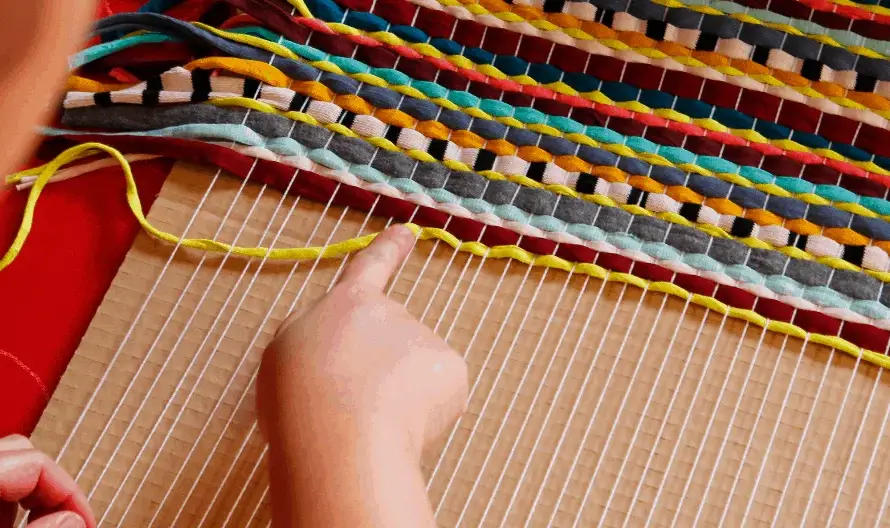Oriental rugs are one-of-a-kind, bring beauty to your home, and are expertly crafted. Although hand-knotted carpets reflect Several cultures and ideas from around the world, they serve as a common ground for all peoples because we all recognize their undeniable beauty and allure. Oriental rugs, arguably the highest quality rug available for the home, are investment pieces that, when properly cared for, may be passed down from one generation to the next. They’re walkable art, and they’re one of the few remaining high-quality old-world artifacts you can buy and enjoy for your house.
Types of oriental rugs
Persian Rugs
Persian carpets are hand-woven Oriental rugs made in Iran (formerly known as Persia). Persian rugs are one of the most ancient, prestigious, and traditional types of rugs. They frequently include classic patterns such as husks, pomegranates, crosses, combs, flowers, jugs, and lotuses, as well as traditional colors like as blue, red, brown, beige, and gold, are frequently included. Persian rugs are among the world’s highest-quality Oriental rugs, with high knot counts as well pricier in cost.
Chobi Rugs
The Chobi rug is a sort of Oriental rug that stands out from the rest because of its delicate color palette. This rug was originally made in Turkey and is now popular in Western countries. As the Chobi rug became more popular, Pakistan took over production and became one of the leading countries to produce it. It has a brown and wood-colored background with brown and wood-colored motifs.
Bokhara rugs
The original Bokhara carpets were handwoven in the Bokhara region, which is now known as Uzbekistan. This region was well-known for producing rugs of exceptional quality and meticulous attention to detail. As a result, Bokhara rugs become highly popular, prompting neighboring countries like Turkey, Afghanistan, Pakistan, Iran, India, and Central Asia also to begin producing similar rugs. Despite their origins, Bokhara rugs have round motifs on relatively empty backgrounds in terms of style.
Tabriz Rugs
The exquisite weaving and impressive adherence to the ancient traditions of antique Persian rug design define antique Tabriz rugs. They are not distinguishable by any pattern or coloration. Antique Tabriz carpets also come in a variety of medallion designs and all-over patterns in every hue imaginable, from dazzling rich tones to subtle pastels. Their superior quality distinguishes them from other Persian rugs.

How to check the Authenticity of oriental rugs
There are several ways to tell the difference between a genuine Oriental rug and a counterfeit. When buying an Oriental rug, there are a few simple techniques to ensure its originality.
- Purchase from reliable sellers who can provide you with references and favorable feedback.
- Avoid going to furniture stores, pressure sales, and discount sales. You’ll almost certainly wind up with an imitation rug unless you go to a professional rug seller or rug manufacturer who only sells excellent carpets or luxury furniture.
- Turn the rug over to examine the pile’s foundation. Rows of knots, which are also marks of authenticity, should be visible. Backings hide the knots and should be avoided at all costs.
- If something seems too good to be true, it probably isn’t. Oriental rugs that are inexpensive are a reliable way to determine quality and legitimacy. To put it another way, you will get the same as you have pay for.
- Turn the carpet over to look for the pattern. Persian and Oriental rugs are handcrafted using designs passed down through the generations. It’s a good indicator of authenticity if you can see the pattern markings on the back of the rug.
Hand-knotted rugs
The single knots can be observed on the back of a carpet that was knotted rather than woven. By examining the knots, experts can assess the knotting method, fineness, effort, and quality of a carpet. It can be particularly evident at the knots. While knot count is a significant factor to consider when evaluating rug quality, it is not the only one. Fine weaving is not suitable in some contexts, such as tribal rugs. In most situations, a finely knotted rug is more appealing and preferred however, this is not always the case. Press your fingers down to the pile’s base to measure knot density using your bare hands. The rug has a high knot density and is quite durable if it feels tightly packed.

Rugs of the Past vs. Rugs of the Future
Old rugs are worth more than new rugs in good condition. It is because a rug’s age gives it character. The colors fade and the wool develops a patina. This relates to the argument over synthetic vs. natural dyes. Synthetic dyes were almost used in every oriental rug created between 1930 and 1990. Rugs spun at the time were seen to be inferior to previous ones. Some carpets are now using natural colours and hand spun wool again. Weavers today utilise old designs that have been revived. Due of the resurgence of earlier techniques, it is impossible to discern what is a good quality rug based on its age.
By checking its Material
The quality of an Oriental rug’s materials is a good place to start because many artists who utilize high-quality materials also produce high-quality carpets. Many firms that manufacture rugs by machine have sought to replicate the sheen of a rug manufactured from high-grade, hand-spun wool or silk. Pulling a little thread from the rug and burning it produces the smell of burnt hair — if you have that sensation, you can be sure it isn’t synthetic.
When properly cared for, a high-quality Oriental rug can last for ages and generations. Those who are smitten by the allure of oriental rugs will spend months and thousands of dollars to find the perfect match for their home. If you decide to add coziness and a sense of belonging to your home with the aid of these priceless design objects, arm yourself with the knowledge to avoid potential scams and unnecessary worry. Scavenging the globe for the perfect rug is a daunting and exhausting endeavor. It may become a mind-numbing task at times, especially if you’ve already spent weeks looking and still haven’t found a rug you like.


